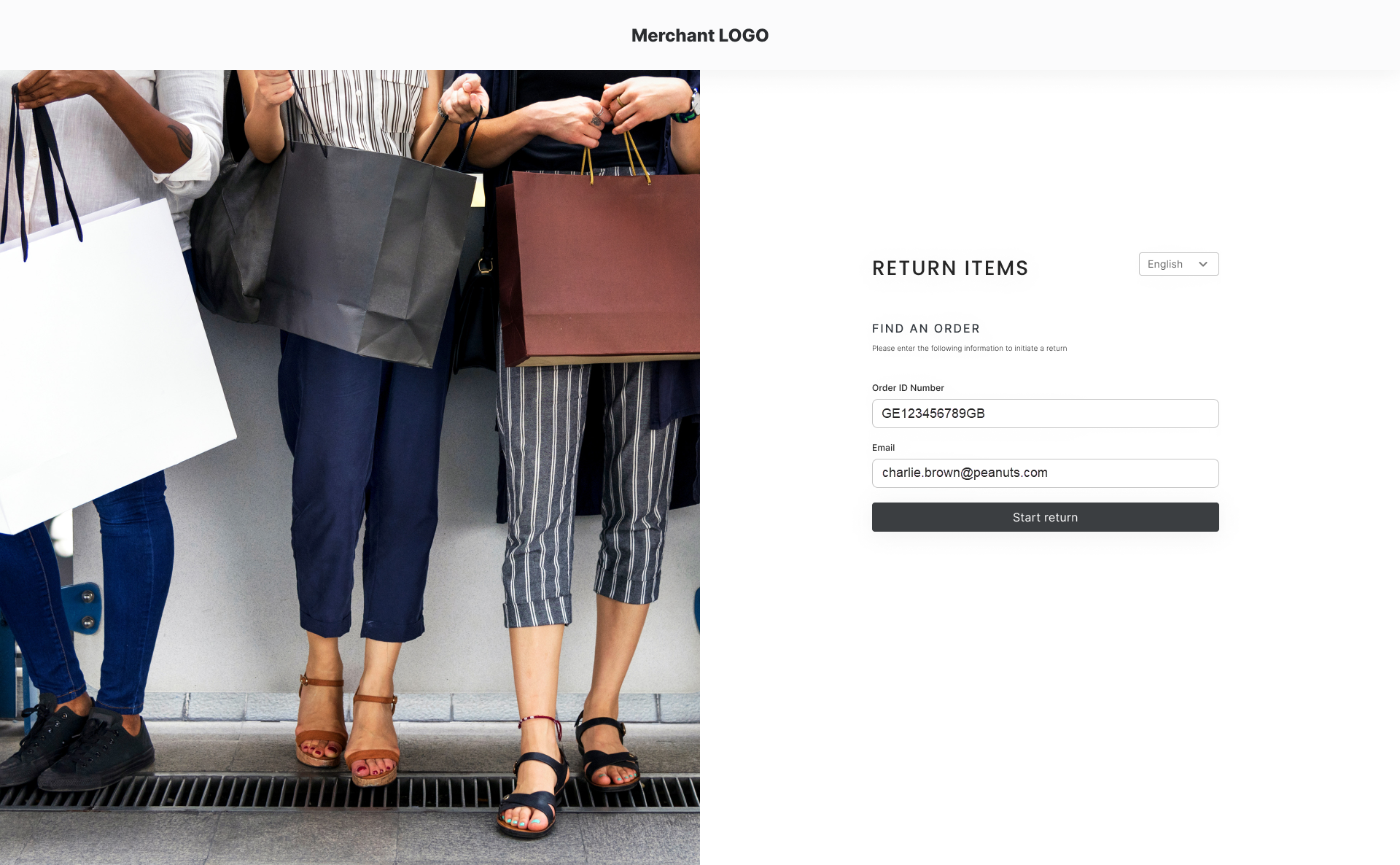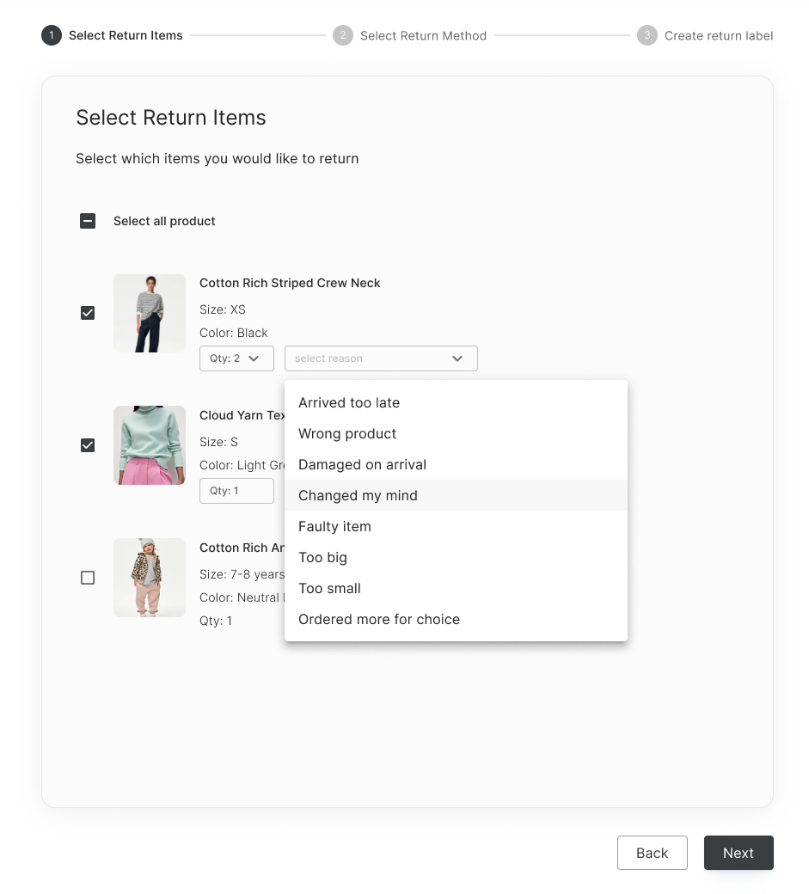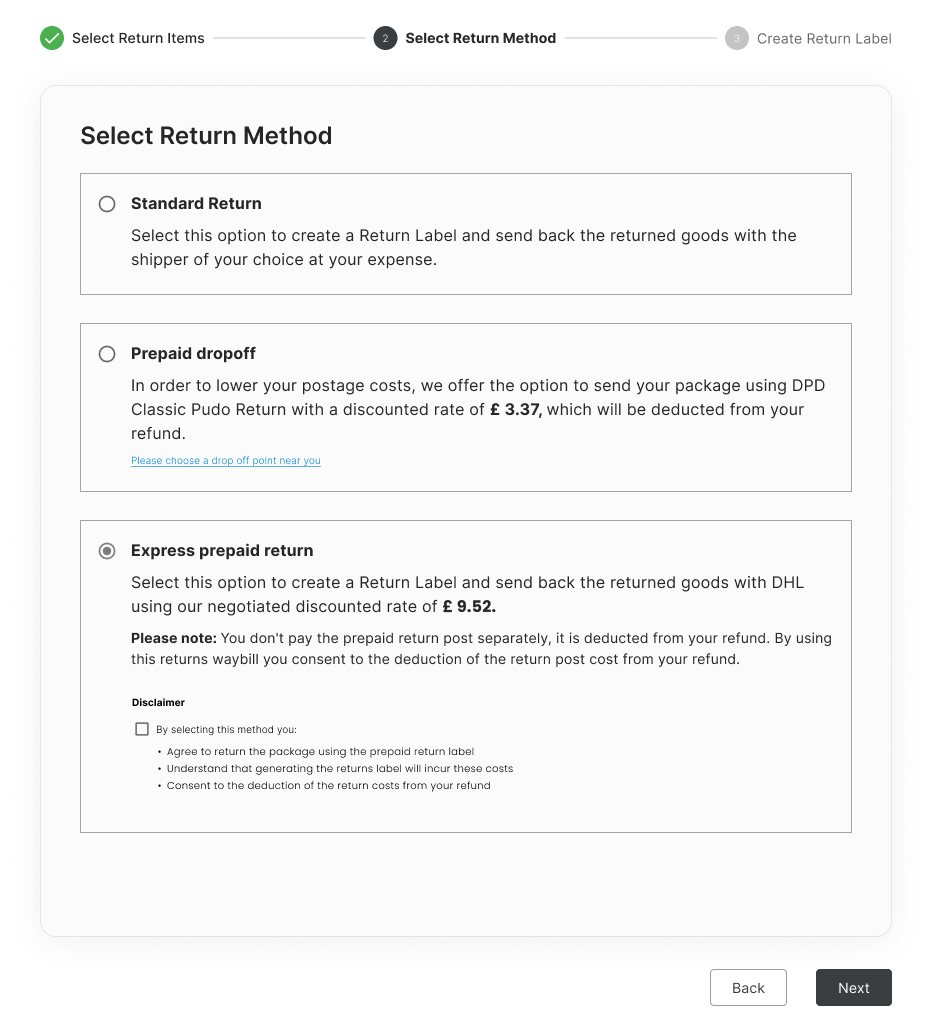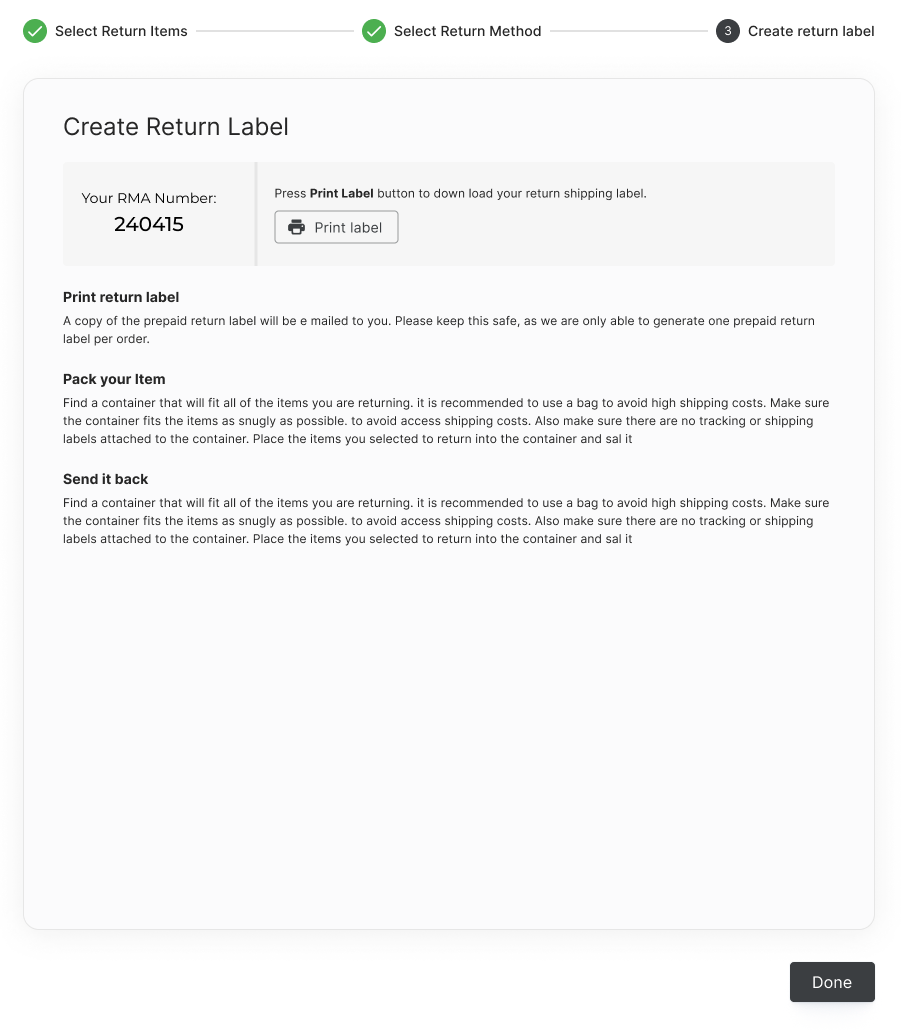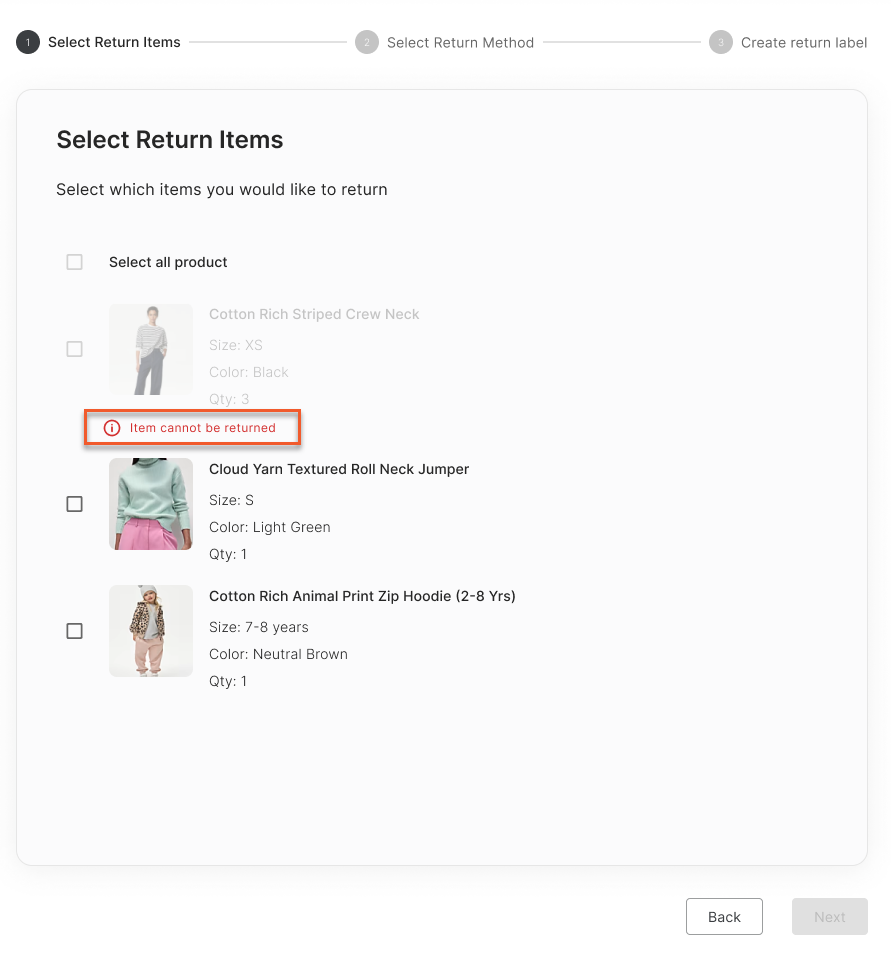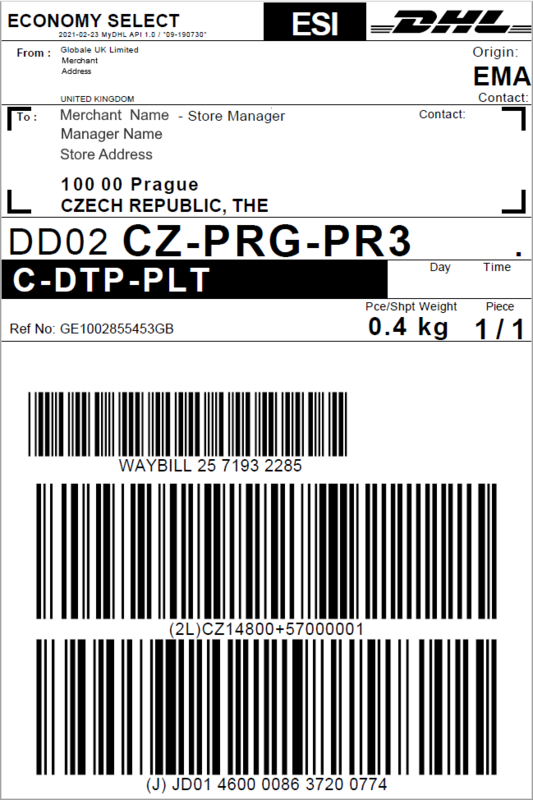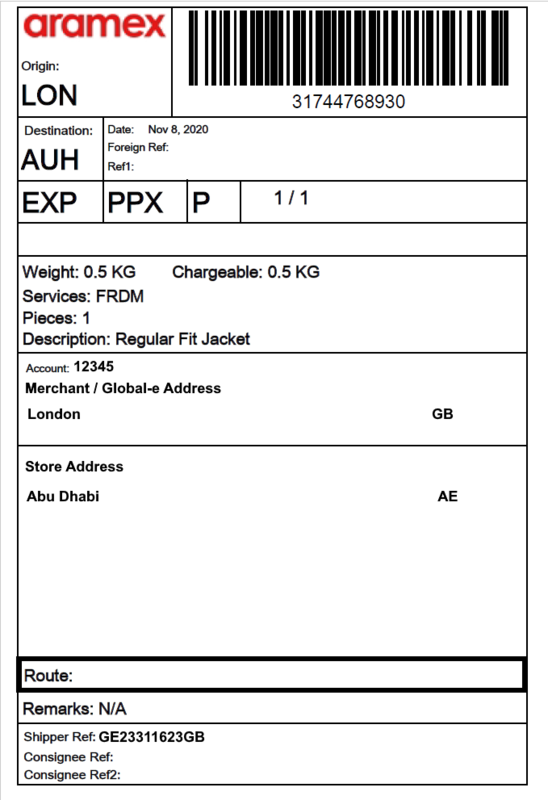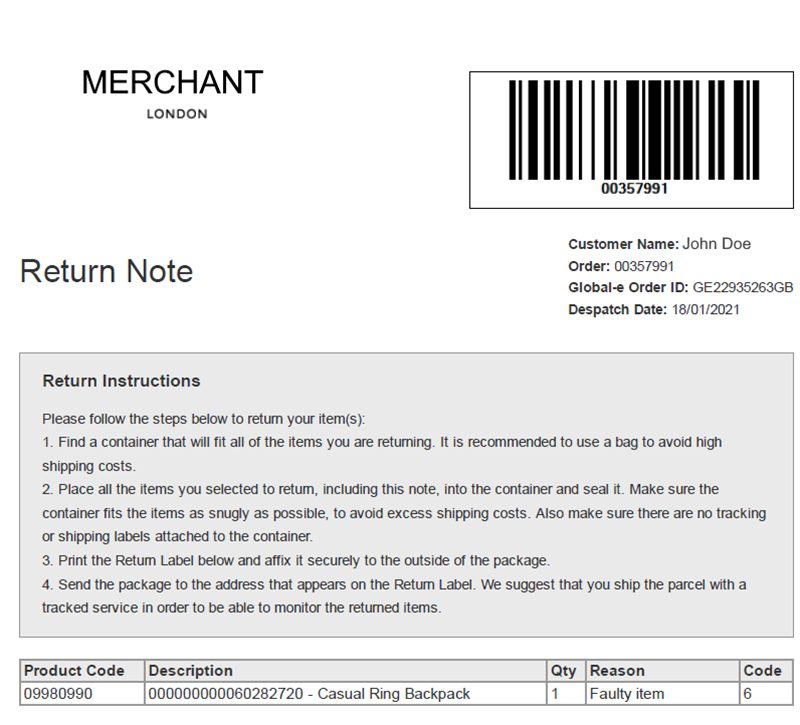Returns Portal
Overview
Note
This article describes how a shopper or customer support representative starts a return and creates an RMA/return shipping documents. For information about using the Merchant Portal to search for returns that have already been started, see Returns.
Global-e provides you with 2 different methods to support shopper returns:
Self-service: If you support self-service returns, the shopper uses the Returns Portal to access their order, initiate a return, and create an RMA and required shipping documents.
Merchant-assisted: A customer support representative (“CS rep”) uses the Global-e Merchant Portal to access the order and initiate a return. They are then automatically forwarded to the Returns Portal to create an RMA and required shipping documents.
The CS rep must have the appropriate user role and permissions for initiating returns (Merchant CS or Merchant CS Admin).
In most respects, the returns process is the same whether initiated by the shopper or the CS rep; only the process of accessing the order is different. However, the CS rep does have a few options that the customer doesn’t have (for example, arranging free return shipping).
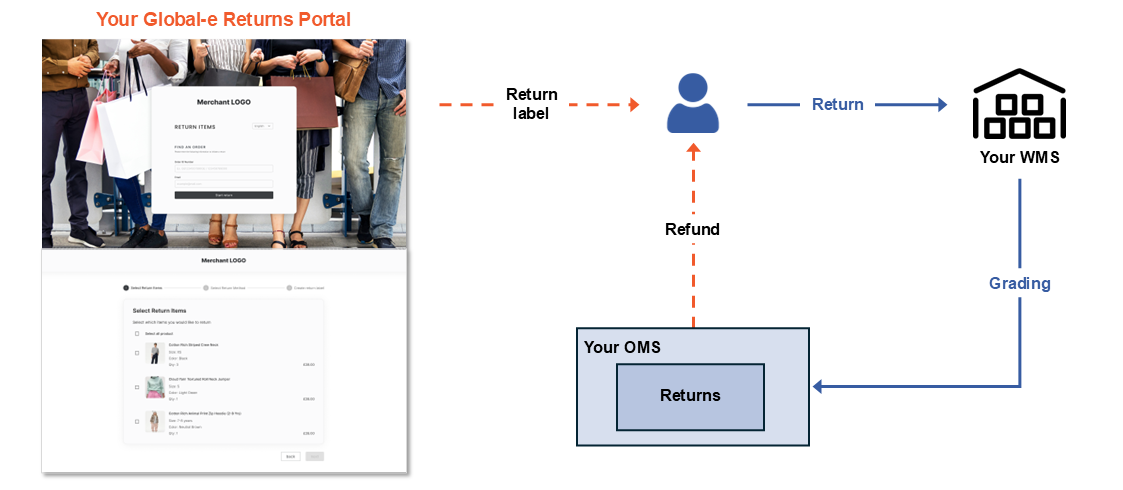 |
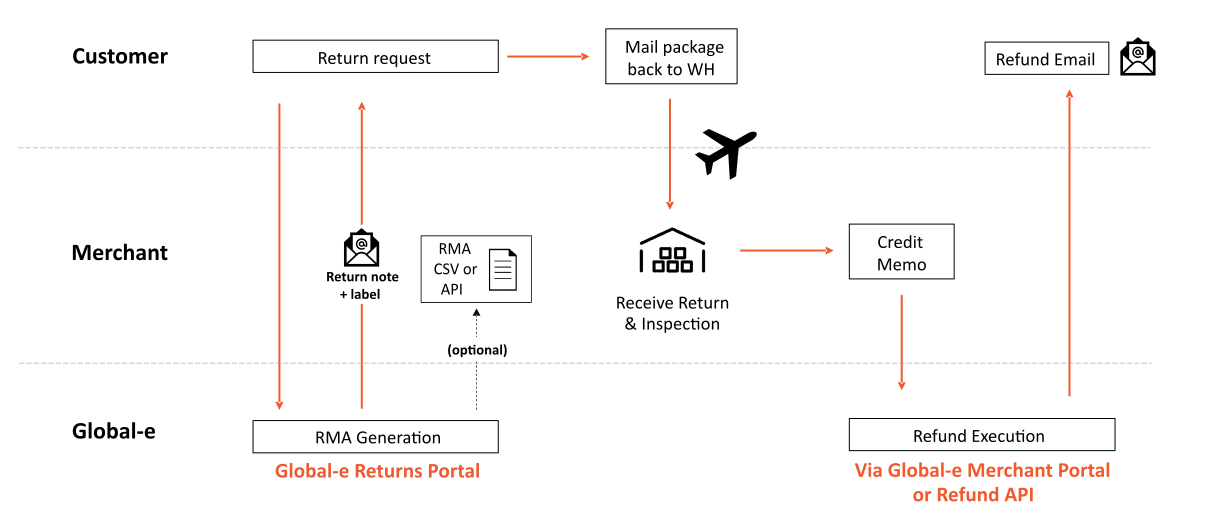 |
Returns Portal Design
As part of the integration process, Global‑e provides you a branded Returns Portal and a unique URL for your shoppers to access it. You can choose one of 4 customizable templates for your Returns Portal:
Note
If your Returns Portal doesn’t yet look like one of these, it’s easy to make that happen! Just contact the Global-e Customer Success team.
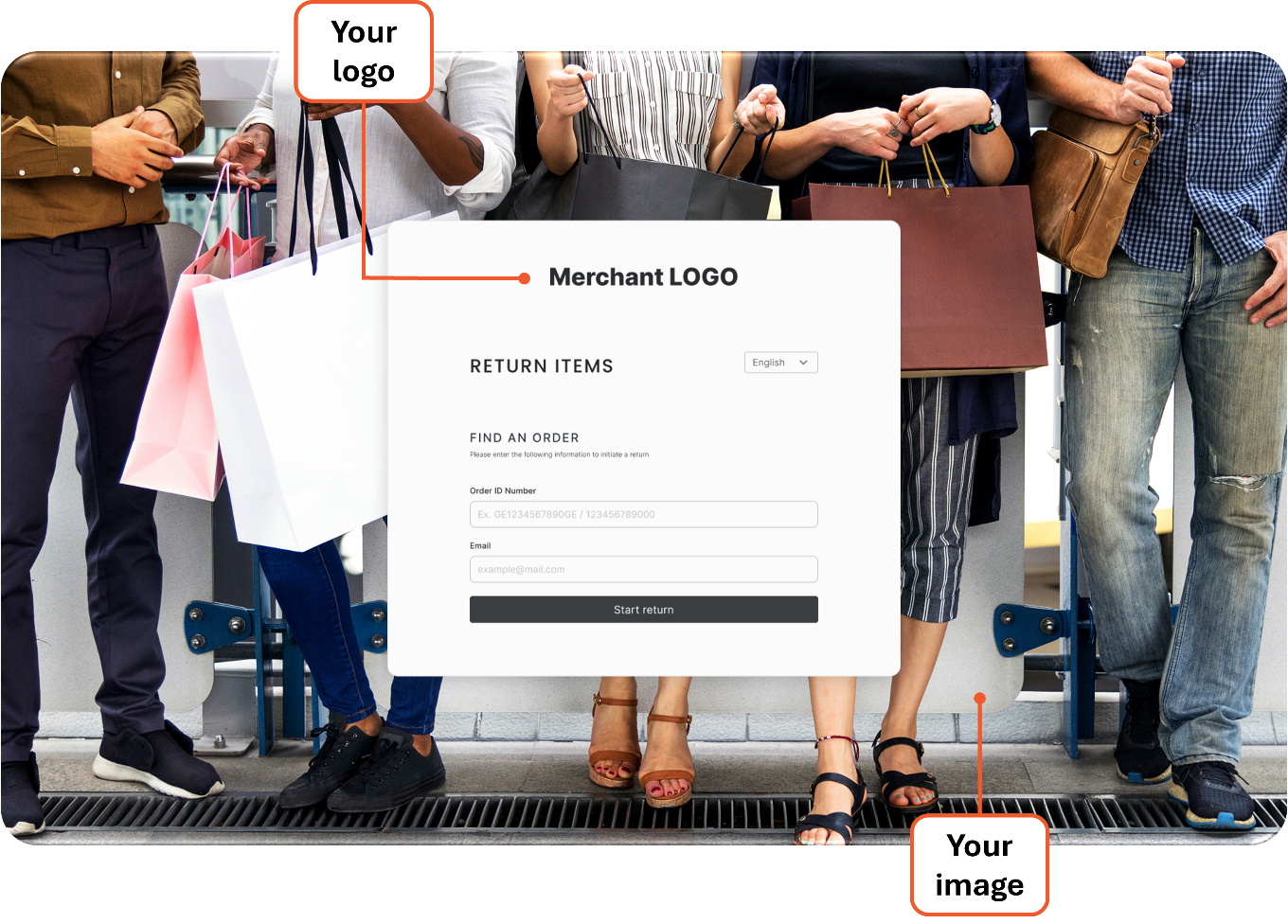 |
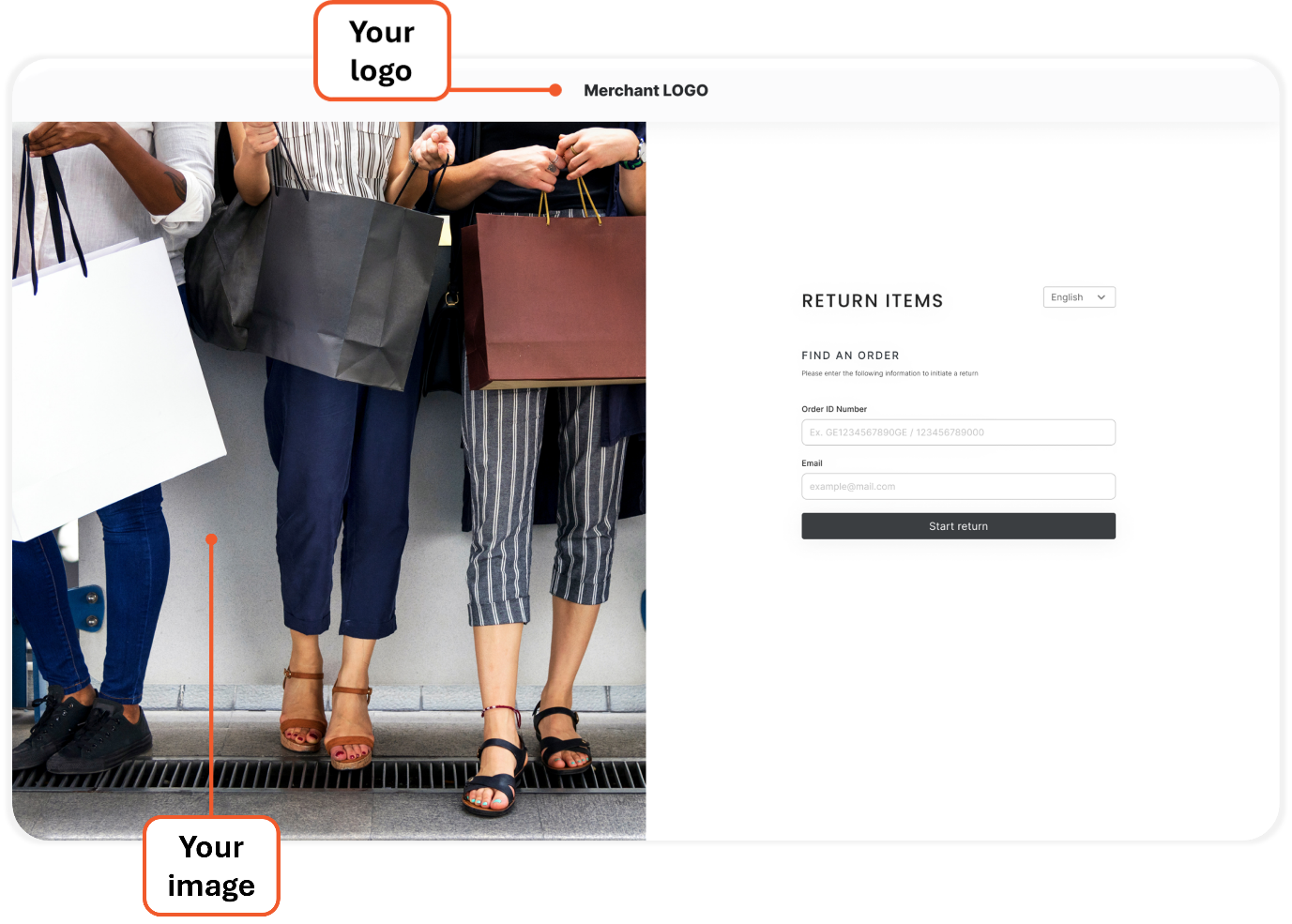 |
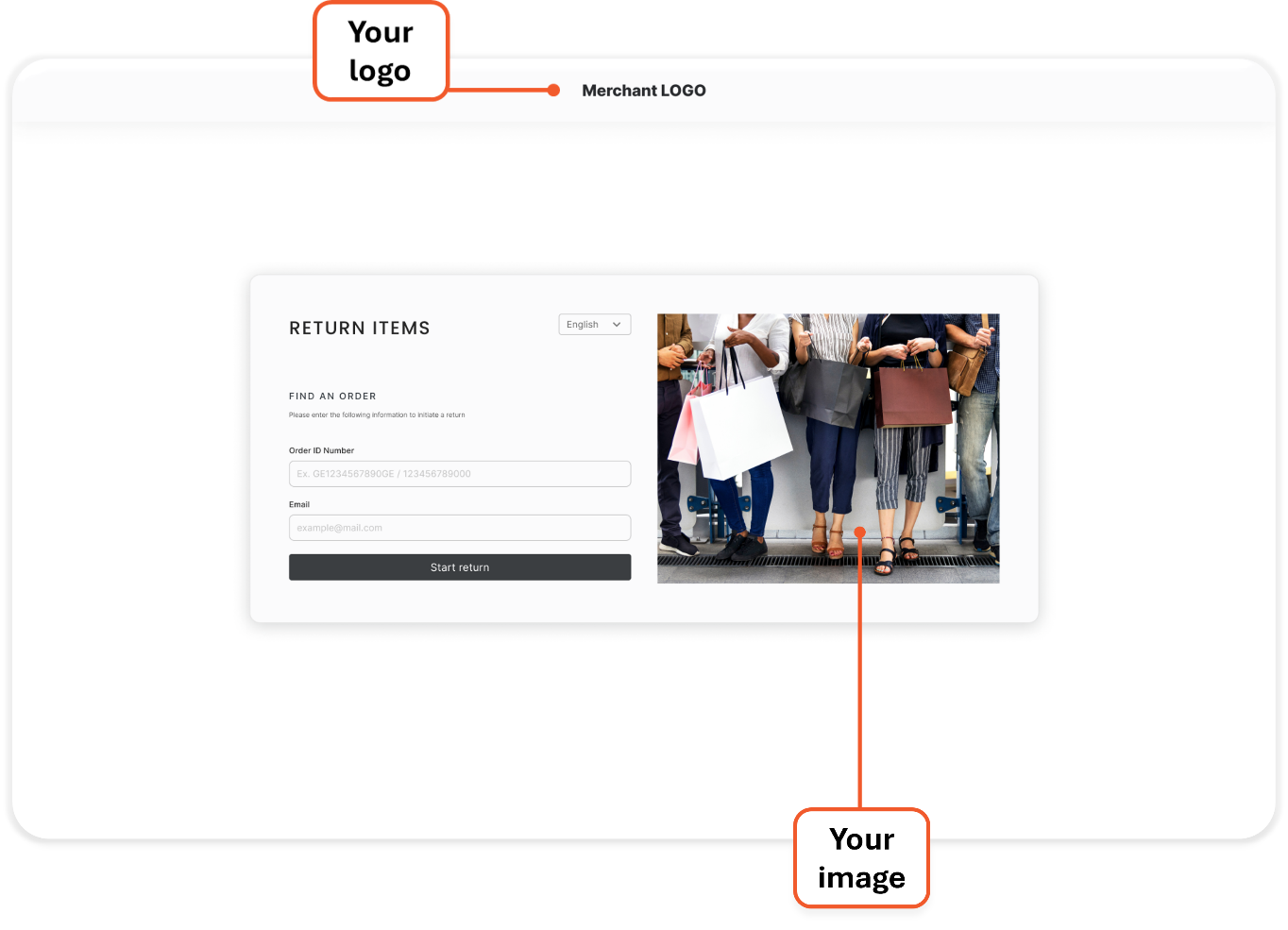 |
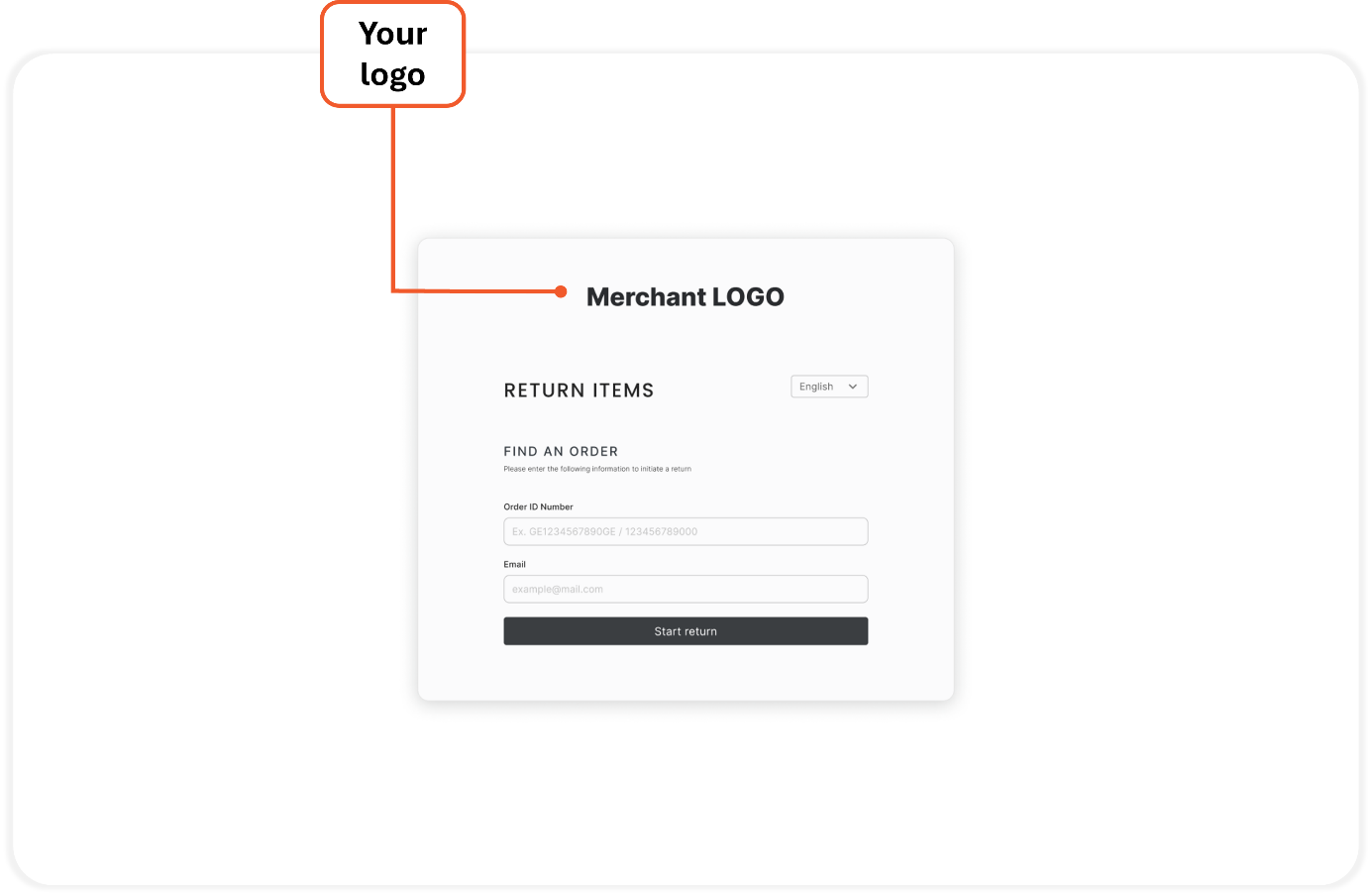 |
You also have the option to customize the following design elements:
Button and text color
Text font and size
CTA text
Header text
Returns Portal Translation
The Returns Portal and return instructions are fully translated and support multiple languages.
The Standard Shipping Label (self-postage) supports English only.
The Return Note is partially translated.
Returns Process
The following instructions detail the steps for initiating a return and creating an RMA, shipping label, and required shipping documents.
Access the Order
The returns process begins with finding and accessing the order. This step is different for shoppers (self-service returns) and CS reps (merchant-assisted returns).
Complete the Returns Process on the Returns Portal
From this point on, the returns process is essentially the same for both shoppers and CS reps, with the Returns Portal leading them step-by step through the process:

For the remainder of this article:
Instructions are written as if speaking directly to the shopper or CS rep.
Any options available to CS reps but not to shoppers are identified.
